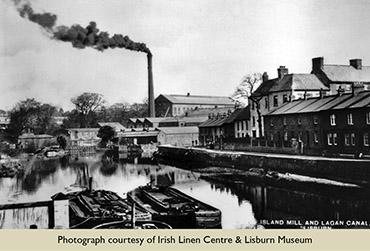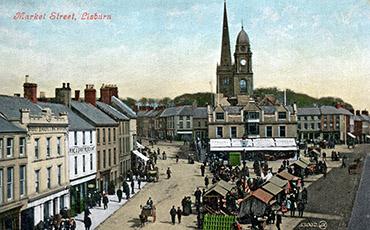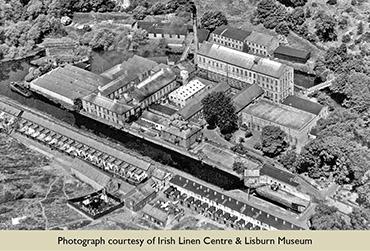 |
|
 |
|
Lisburn is located southwest of Belfast, on the River Lagan, which forms the boundary between County Antrim and County Down. As a town, it was originally known as Lisnagarvy (also spelt Lisnagarvey or Lisnagarvagh) after the townland in which it was formed. This is derived from Irish, meaning “ringfort of the gamesters/gamblers”. In 1611 James 1 granted the lands of Killultagh in south west Antrim to Sir Fulke Conway who had fought for the Earl of Essex in the King’s campaign against the O’Neills. During the 1620s, Conway laid out Market Square, Castle Street, Bow Street and Bridge Street and encouraged settlers from his estates in Warwickshire and Wales. A manor house, known as Lisburn Castle, was built for the Conways, as well as a church and a market house. During the 17th and early 18th centuries two other groups, the Huguenots, fleeing religious persecution in France, and the Quakers, members of the Society of Friends in England, came to Lisburn. Their skills and commercial experience provided distinctive contributions to the prosperity and growth of the linen trade in 18th century Lisburn. In the 19th and 20th centuries, Lisburn’s central location in the Lagan Valley was further enhanced by canal, rail and road connections. The arrival of mills and factories led to Lisburn becoming renowned for linen manufacture as well as trade. It developed into a bustling market town. In 2002, the Borough of Lisburn was granted city status as part of Queen Elizabeth II's Golden Jubilee celebrations. |
||


